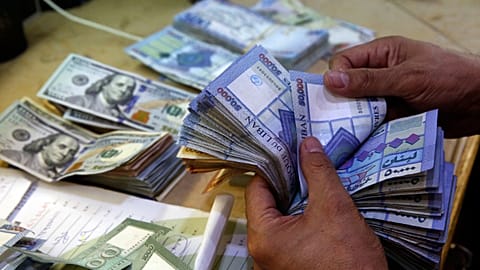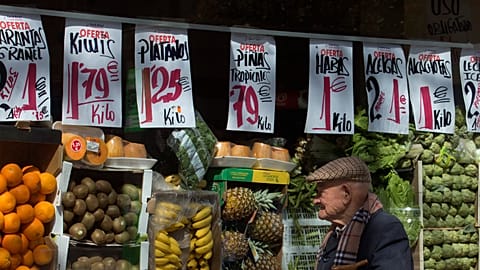Annual inflation in the EU and eurozone continues to show signs of easing, with January figures showing a fall in 15 of the EU countries. However, the remaining 11 countries recorded a rise.
Inflation in the EU has been gradually and consistently falling since its peak at 11.5% in October 2022. In January 2024, the annual inflation in the EU was 3.1%, down from 3.4% in December according to Eurostat, the statistical office of the EU.
That was in sharp contrast to the same time last year when it was 10.0%.
At the same time, the eurozone area annual inflation rate was 2.8% in January 2024, down from 2.9% in December and considerably lower than the 8.6% seen in January 2023.
Prices are rising slowly
Falling inflation indicates that consumer prices are increasing more slowly than they were earlier, although they are still rising. Negative inflation, or deflation, happens when prices fall in an economy. In January, for example, energy prices in the EU were lower than a year earlier.
Eurostat's preliminary estimate, issued on 1 March, demonstrates that annual inflation in the eurozone area fell to 2.6% in February, down from 2.8% in January. However, it is still above the European Central Bank's (ECB) target inflation rate of 2%.
The inflation rate, measured by the Harmonised Index of Consumer Prices (HICP), largely differs across Europe. While it has been seen to cool in most of the EU countries, none of them showed a negative inflation figure in January year-on-year. The Eurostat's estimates for February do not show any sign for such a decline in any country yet.
How do inflation rates in the EU compare and how has the annual inflation changed since its peak?
Inflation hit its highest rate in the past four decades in October 2022.
The COVID-19 crisis was followed by a significant surge in consumer prices as the Organisation for Economic Co-operation and Development's (OECD) report of 2023 showed. Prices began to rise in 2021 because of the rapid rebound from the pandemic and related supply chain bottlenecks.
Russia's invasion of Ukraine also pushed inflation upwards again with its impact on energy prices bringing it, in October 2022, to levels not seen for 40 years.
Between 1997 and the end of 2021, the EU's highest annual inflation rate of 4.4%was recorded in July 2008.
Since that peak, the annual inflation rate in both the EU and eurozone area fell every month, with the exception of one month for each section.
Romania has the highest inflation
January 2024's figures show, the annual inflation ranged from 0.9% to 7.3% in the EU. Romania came in with the highest rate 7.3% among the EU members, followed by Estonia (5%), Croatia (4.8%) and Poland (4.5%).
Lowest inflation in Denmark and Italy
Denmark and Italy recorded the lowest annual inflation rates at 0.9%. Latvia, Lithuania and Finland followed them at 1.1%.
Among other EU's Big Four, the inflation rate was above the EU average for Spain (3.5%) and France (3.4%) while Germany (3.1%) reported the same level as the EU. Inflation in the UK was 4.2%.
When compared with December, annual inflation fell in 15 EU countries, remained stable in one and rose in 11 others.
Inflation is higher in candidates countries
All five candidate countries for which Eurostat provided data revealed higher annual inflation rates than the EU.
Turkey was an extreme outlier at 64.9%. In fact, the opposition parties and former head of TurkStat's claim that the official inflation figures have been manipulated. The annual consumer inflation rate was found to be 129% by the independent Inflation Research Group (ENAG).
Decline expected in 11 out of 20 countries in February
According to Eurostat's preliminary estimate, the annual inflation is expected to fall in 11 out 20 countries of the Euro area in February compared to January.
Slovakia had the highest decline by 0.7 percentage points (pp) from 4.4% to 3.7%, followed by 0.6 pp fall in Spain, Malta and Estonia.
It rose in four countries, namely Belgium (2.1 pp), Luxembourg (0.2 pp), Cyprus and Finland (both 0.1 pp) according to the estimate.
In the euro area, Croatia recorded the highest annual inflation rate in February 2024 at 4.8%, while Latvia had the lowest rate at 0.9%, measured by HICP.
Looking at the main components of the eurozone, inflation, food, alcohol & tobacco is expected to have the highest annual rate in February (4.0%, compared with 5.6% in January). It is followed by services (3.9%, compared with 4.0% in January) and non-energy industrial goods (1.6%, compared with 2.0% in January).
The estimate shows that energy inflation will continue to be negative at -3.7%, a remarkable decline compared with -6.1% in January.
In January, unprocessed food inflation was 6.9%, while it eased to 2.2% in February. This might be good news in particular for the low-income households as real food inflation, which is the rate of food inflation minus overall inflation, is putting huge pressure on them.
Food and non-alcoholic beverages inflation was 5.4% in the euro area, resulting in 2.8% real food inflation in the eurozone in January.
Economic activity to accelerate in 2024
The European Commission's Winter 2024 Economic Forecast report, released in mid-February, shows that economic activity in the EU is expected to gradually accelerate in 2024. Consumers are also expected to spend more. As inflation continues to drop, real wages will grow. Falling inflation will help to keep rising food prices in check.


















